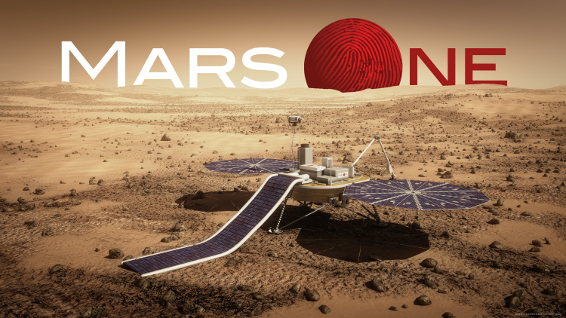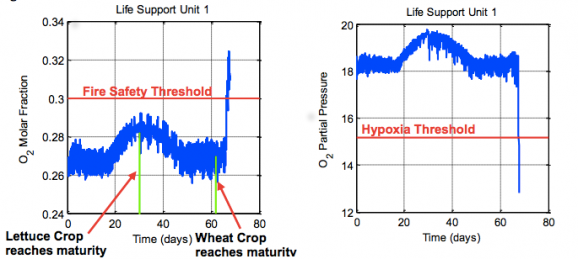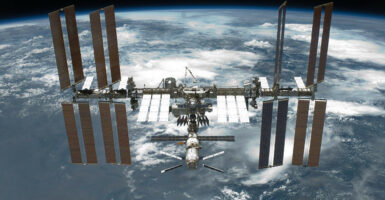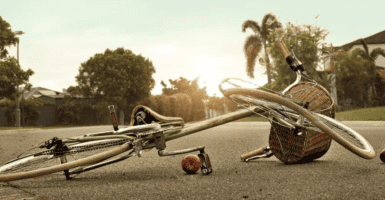Mars One Simulation Offers Grim Predictions For The Mission
This article is more than 2 years old
 The Dutch nonprofit Mars One aim to send four humans to Mars in 2024 (two years later than in their original timeline) for a 2025 landing on the Red Planet. These four intrepid colonists will be joined by 4 more two years later, and then 4 more two years after that, until the colony reaches 24. Or at least, that’s the plan. But according to strategic engineering graduate students at MIT, the strategy, as it currently exists, may prove problematic. Unless the program makes some fundamental changes to its approach, the researchers predict that the new colony will be unsustainable and deadly for the colonists.
The Dutch nonprofit Mars One aim to send four humans to Mars in 2024 (two years later than in their original timeline) for a 2025 landing on the Red Planet. These four intrepid colonists will be joined by 4 more two years later, and then 4 more two years after that, until the colony reaches 24. Or at least, that’s the plan. But according to strategic engineering graduate students at MIT, the strategy, as it currently exists, may prove problematic. Unless the program makes some fundamental changes to its approach, the researchers predict that the new colony will be unsustainable and deadly for the colonists.
The team developed a simulation of the settlement, per Mars One’s stated mission design. That simulation provided them with a tool to measure and predict how using the resources on the planet, growing crops, and future resupply efforts, will play out. Of course, this is just a model—no one can say with certainty how the mission will unfold, but creating and studying such models is one of strategy any Mars colonization mission organizers should rely on for insight about how to make their mission safer and, hopefully, more successful.
One of the aspects the researchers studied is the effect of the colonists growing their own crops. It sounds like a good idea because it requires fewer supplies and could potentially lead to sustainable food practices, as well as a greater variety of foods such as vegetables and greens. But the researchers found that growing so many plants inside the habitats would actually produce too much oxygen—so much that the colonists would have to vent the excess. According to the projections, the first crewmember would die of suffocation approximately 68 days into the mission, because we don’t yet know how to vent oxygen without also venting nitrogen, which is necessary to maintain life-supporting pressure inside the habitats. Venting nitrogen along with oxygen would make it tough to breathe and greatly increase fire hazards.
 Okay, so say Mars One nixes the crop-growing idea and find a separate area or greenhouse to grow the crops, or even just bring their food from Earth. While a greenhouse might sound like a great idea, it would demand enough additional parts that the model suggests it would be more cost-effective just to bring the food. But to provide enough food and replacement parts for the essential structures would require a projected 15 heavy rocket launches, costing in the neighborhood of $4.5 billion. Mars One’s projected budget stands at $6 billion for everything it needs to get the program off the ground (the rest it intends to make via the reality TV aspect of the mission), so that seems to be a problem.
Okay, so say Mars One nixes the crop-growing idea and find a separate area or greenhouse to grow the crops, or even just bring their food from Earth. While a greenhouse might sound like a great idea, it would demand enough additional parts that the model suggests it would be more cost-effective just to bring the food. But to provide enough food and replacement parts for the essential structures would require a projected 15 heavy rocket launches, costing in the neighborhood of $4.5 billion. Mars One’s projected budget stands at $6 billion for everything it needs to get the program off the ground (the rest it intends to make via the reality TV aspect of the mission), so that seems to be a problem.
The 35-page feasibility study raises a lot of questions about the practicality of Mars One’s plan. CEO Bas Lansdorp believes that oxygen concentrators will solve the atmosphere and pressure issues and dismisses the projections, saying that “lack of time for support from us combined with their limited experience results in incorrect conclusions.” I hope Mars One is willing to address such projections and criticism to the extent that it can prove he’s right.












